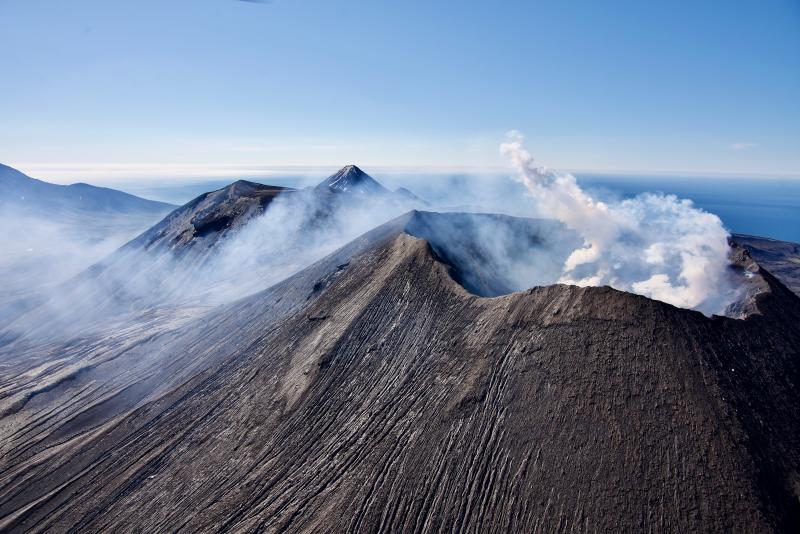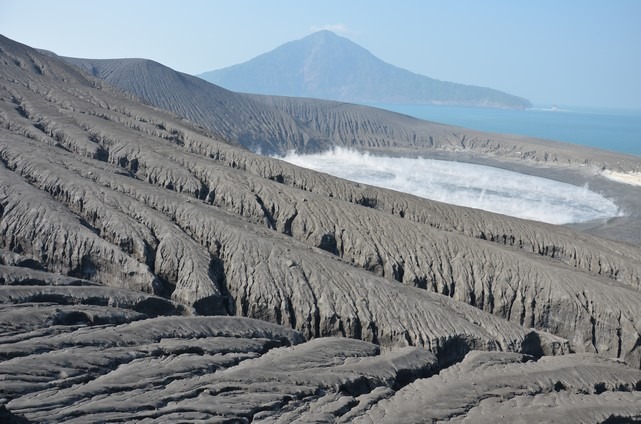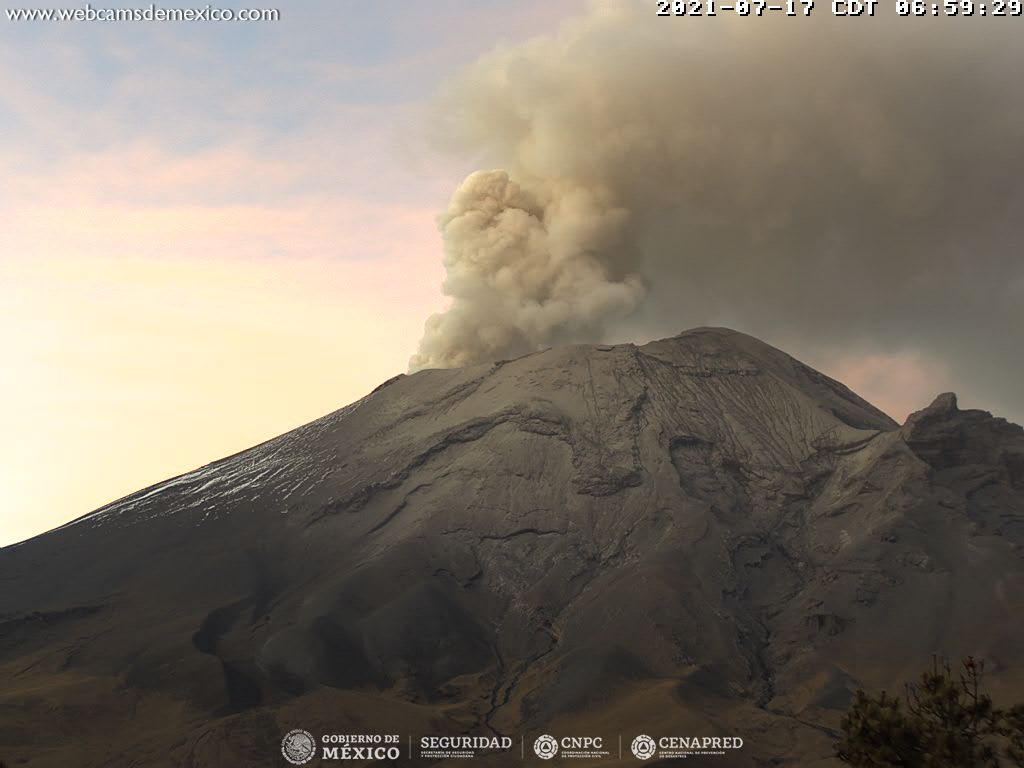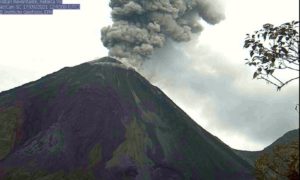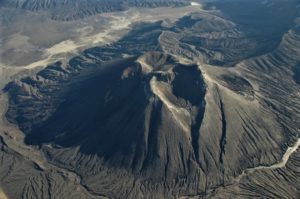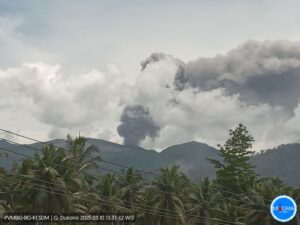July 19 , 2021 .
Alaska , Semisopochnoi :
51°55’44 » N 179°35’52 » E,
Summit Elevation 2625 ft (800 m)
Current Volcano Alert Level: WATCH
Current Aviation Color Code: ORANGE
Low-level seismicity observed over the past day. Sulfur dioxide gas emissions were detected in satellite data from yesterday afternoon. The gas plume contained small, but measurable amounts of gas and extended for about 200 km (120 miles) towards the north. Gas emissions such as these have been observed intermittently over the past months and do not indicate that an explosive eruption while occur. Other satellite and web camera observations were obscured by clouds over the past day. No evidence of explosive activity was detected in seismic or infrasound data.
Small eruptions producing minor ash deposits within the vicinity of the active north crater of Mount Cerberus and ash clouds under 10,000 ft above sea level are typical of recent activity at Semisopochnoi. Small explosions may occur without warning and could be undetected by regional infrasound sensors and cloudy weather conditions.
Semisopochnoi is monitored by local seismic and infrasound sensors, satellite data, regional infrasound, and lightning detection instruments.
Source : AVO
Photo : Read, Cyrus, Alaska Volcano Observatory / U.S. Geological Survey.
Indonesia , Anak Krakatau :
Level of activity level II (WASPADA) since March 25, 2019. The Anak Krakatau volcano (157 m above sea level) has experienced increased volcanic activity since June 18, 2018, which was followed by a series of eruptions during the period from September 2018 to February 2019.
The volcano is covered in fog. Through CCTV footage, white smoke was observed with low to medium intensity 50 meters high, the sea waves were calm. The weather is sunny to cloudy, the wind is weak in the South-East, South-West and North-West.
According to the seismographs of July 18, 2021, it was recorded:
2 emission earthquakes
3 low frequency earthquakes
1 distant tectonic earthquake
A continuous tremor, amplitude 1-12 mm (predominance of 2 mm).
Source : PVMBG.
Photo : Nath Duverlie .
Chile , Nevados de Chillan :
Special Report on Volcanic Activity (REAV), Ñuble region, Nevados de Chillán volcanic complex, July 18, 2021, 7:40 p.m. local time (Continental Chile).
The National Service of Geology and Mines of Chile (Sernageomin) publishes the following PRELIMINARY information, obtained thanks to the monitoring equipment of the National Volcanic Monitoring Network (RNVV), processed and analyzed at the Volcanological Observatory of the Southern Andes ( Ovdas):
On Sunday July 19, at 7:17 p.m. local time (11:17 p.m. UTC), monitoring stations installed near the Nevados de Chillán volcanic complex recorded an earthquake associated with fluid dynamics (long period type) in the volcanic system.
The characteristics of the earthquake after its analysis are as follows:
ORIGINAL TIME: 19:17 local time (23:17 UTC)
LATITUDE: 36.856 ° S
LONGITUDE: 71.384 ° W
DEPTH: 1.5 km
REDUCED DISPLACEMENT: 568 (cm2)
ACOUSTIC SIGNAL: 4.7 Pascals (Pa) reduced to one km
The characteristics of the surface activity are as follows:
Maximum column height: Not determined due to poor visibility at night.
Maximum height of the incandescence: 220 meters above the point of emission
OBSERVATIONS:
At the time of publication of this report, no changes have been observed in the level of volcanic activity.
The volcanic technical alert remains at the Yellow level.
Source : Sernageomin.
Photo : Josefauna.
Mexico , Popocatepetl :
July 17, 11:00 a.m. (July 17, 4:00 p.m. GMT)
During the last 24 hours, thanks to the monitoring systems of the Popocatepetl volcano, 74 exhalations of water vapor, gas and light amounts of ash have been identified, as well as 457 minutes of tremor. In addition, two minor explosions were recorded on 07/16 at 8:01 p.m. and 8:43 p.m. In the early morning, incandescent fragments were observed a short distance from the crater of the volcano.
At the time of this report, there was continuous visibility towards the crater of the volcano with the emission of water vapor, gas and light amounts of ash in a westerly direction.
CENAPRED recommends NOT TO APPROACH the volcano and especially the crater, because of the danger of falling ballistic fragments and, in the event of heavy rains, to stay away from the bottom of the ravines because of the danger of mudslides.
The Popocatépetl volcanic traffic light is in PHASE 2 YELLOW.
Source et photo : Cenapred .

